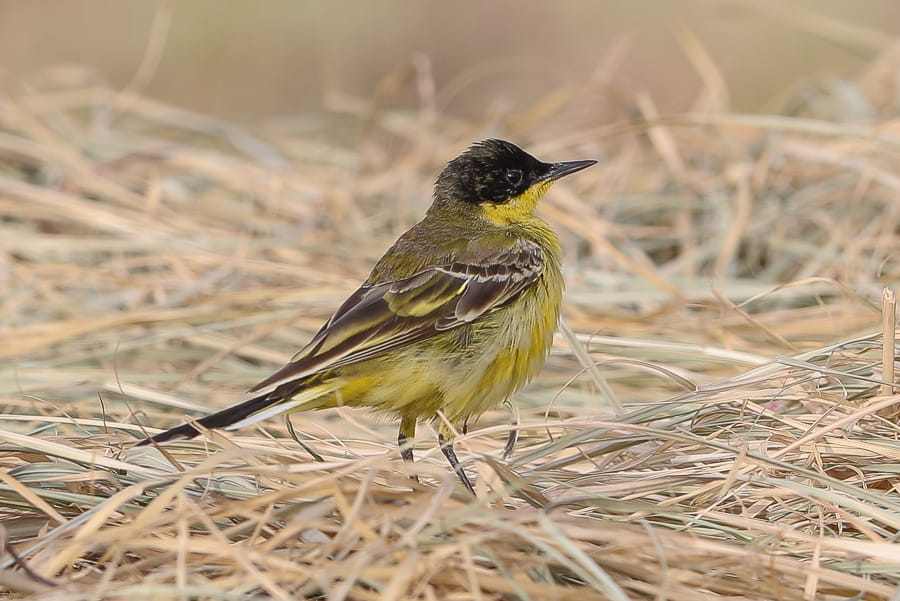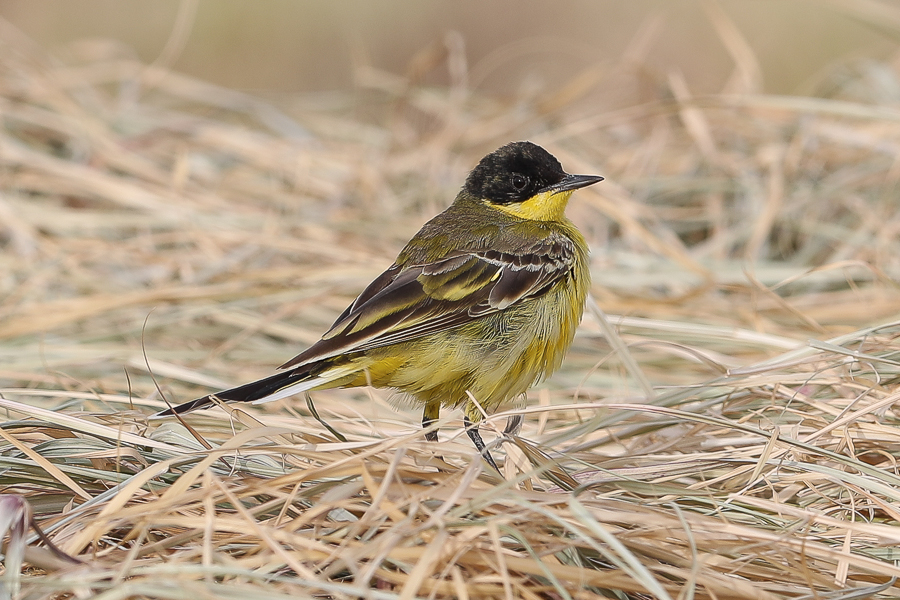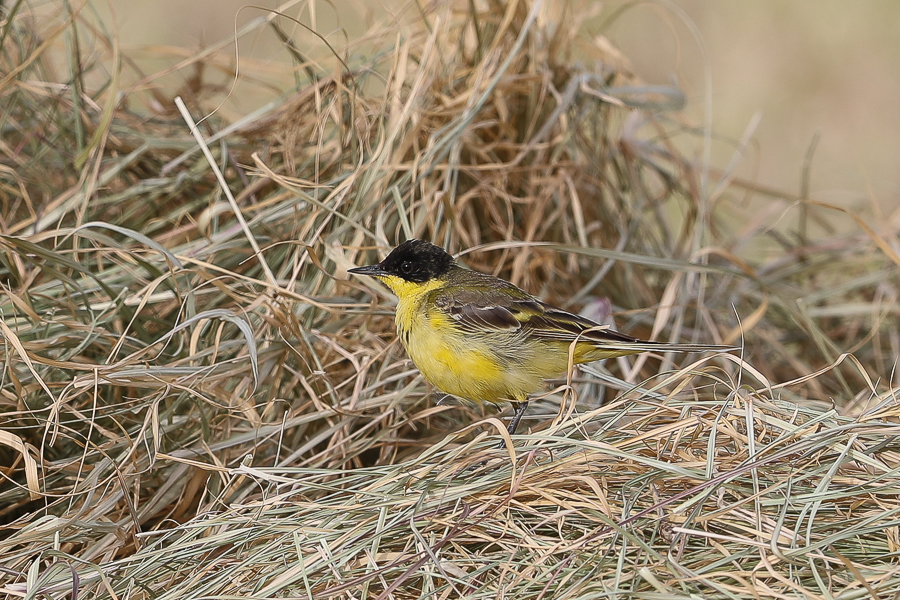Whilst birdwatching the Haradh area in early a January 2017 I came across up to 30 Yellow Wagtails including some male Black-headed Wagtails feeding in a stubble field. This is a very early date for the birds and they may well have wintered in the area. Mid-February is the start of the spring passage for this species and Black-headed Wagtail feldegg is often the first subspecies to occur.
The Black-headed Wagtail is part of the Yellow Wagtail complex a group of birds that are common spring and autumn passage migrants, sometimes in hundreds. Thy pass from mid-February to May and again from early August to mid-November with many races identifiable in the field including feldegg, melanogrisia, lutea, flava, thunbergi and bema. In spring the black-headed yellow wagtail feldegg (considered by some as a separate species) is often the first subspecies to occur with bema, flava and thunbergi following.
By April, flocks of more than a hundred birds are regularly recorded in cultivated areas. During the autumn peak passage, in October, numbers are higher with flocks occasionally exceeding 500 birds. Occasionally they are also recorded during summer and winter such as these birds.
Jem Babbington
Jem Babbington is a keen birder and amateur photographer located in Dhahran, Eastern Saudi Arabia where he goes birding every day. Jem was born in England and is a serious local patch and local area birder who has been birding for almost forty years and has birded in more than fifty countries. Jem is learning to ring birds in Bahrain as a perfect way to learn more about the birds of the area. Saudi Arabia is a very much under-watched and under-recorded country.




Leave a Reply